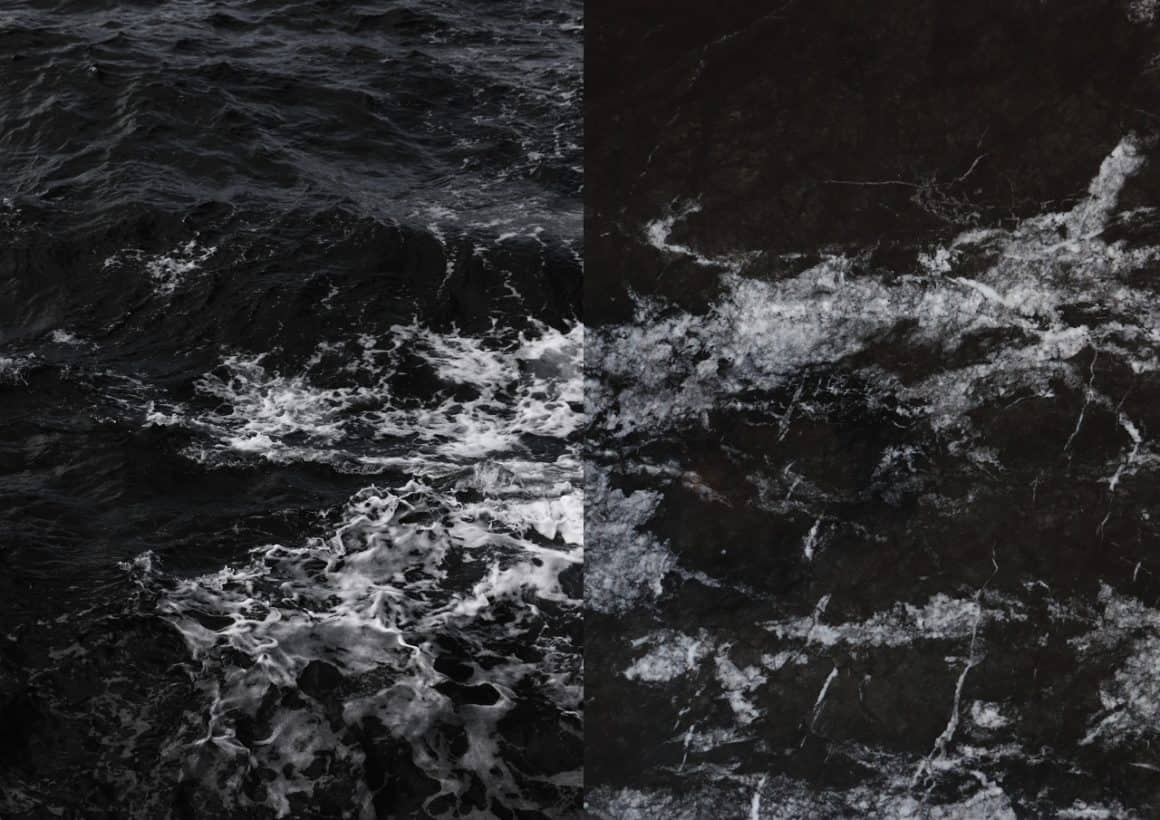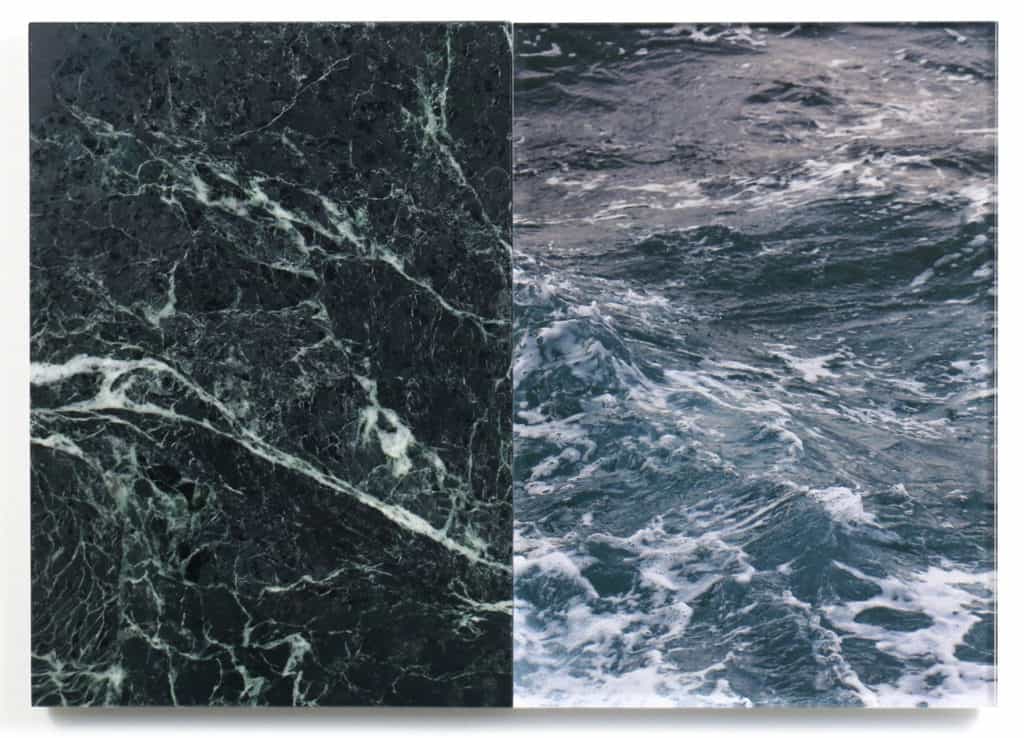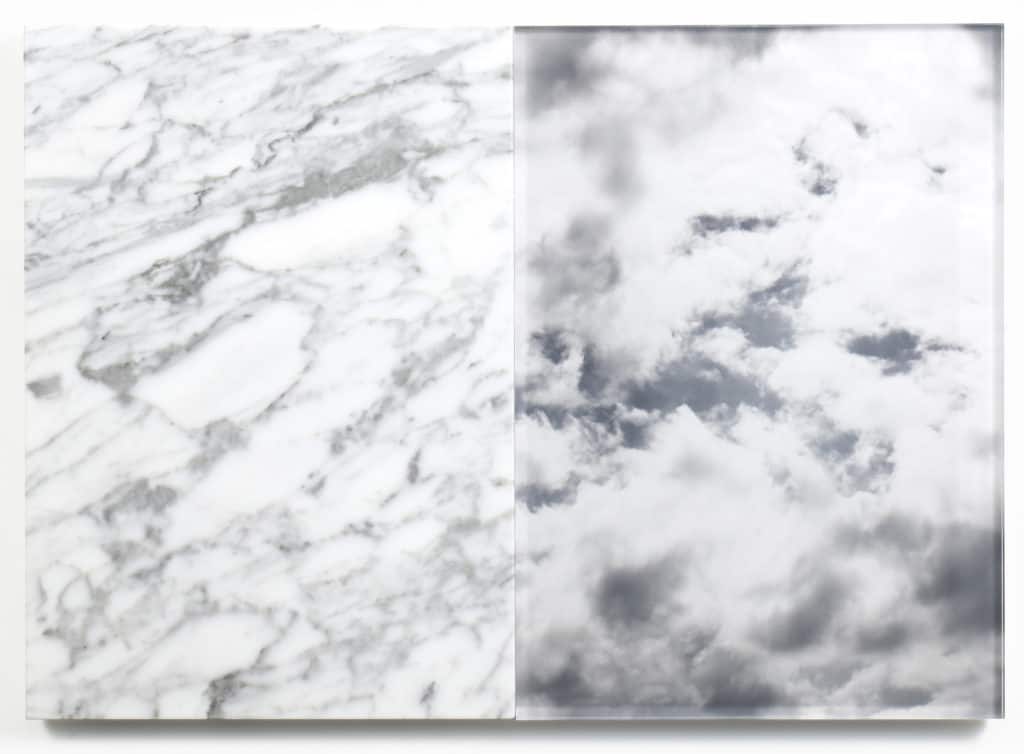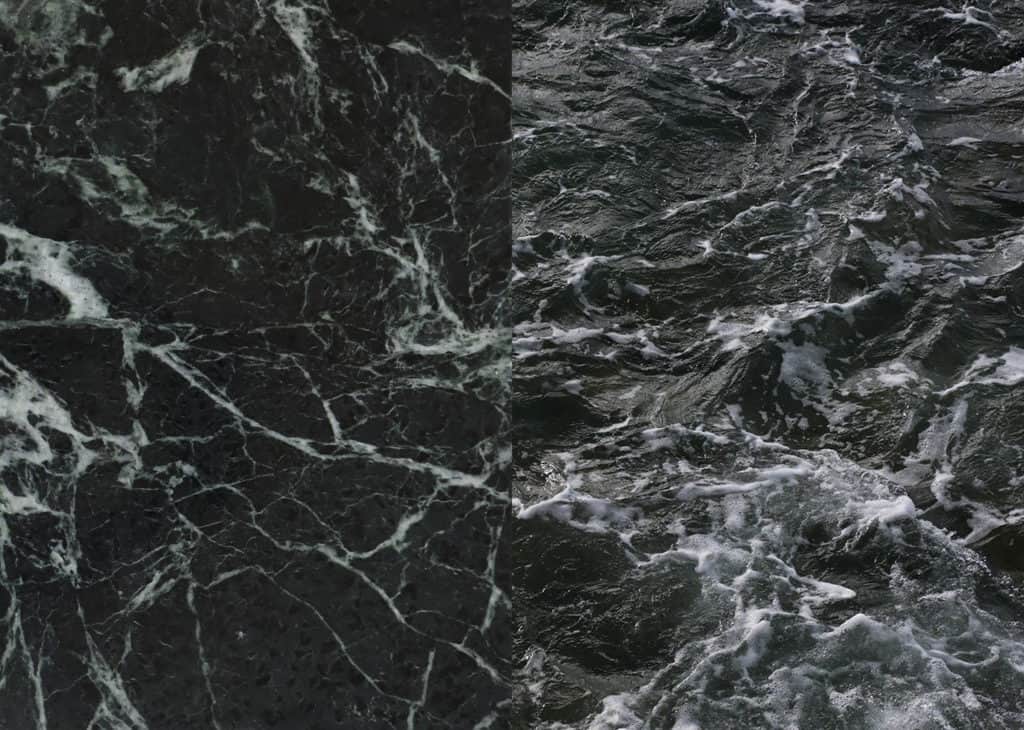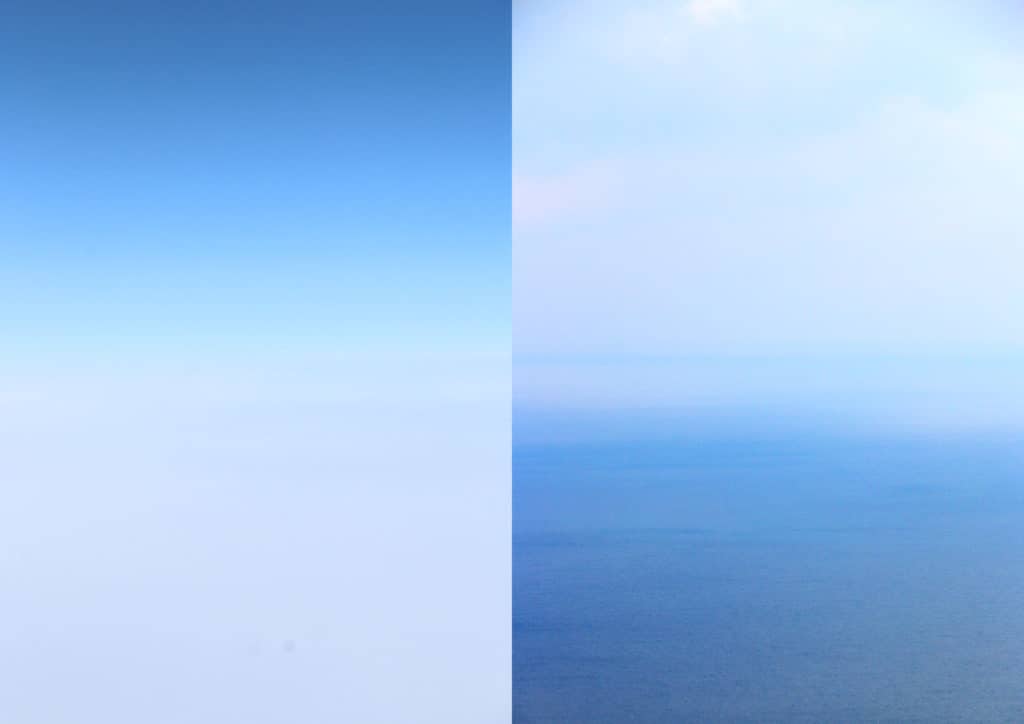We are showing our second solo exhibition of the Japanese artist Tomoyuki Ueno (born 1982 in Kobe).
Ueno’s work is extremely complex. In recent years, however, it seems to have been increasingly influenced by nature. Especially during his stay in the Japanese mountains during the 2020 pandemic, Ueno became very aware of the themes of nature, life and death. This preoccupation with nature is dominated by a Buddhist worldview rather than a Christian one, because it is about the intertwining of life and death, passing and rebirth.
This becomes particularly clear in a central group of works that he has developed in recent years, the Wave- and Sky Sculptures. In this series of works, he combines structures in marble slabs with forms and structures he finds in cloud formations or water surfaces. He combines a natural structure that has existed unchanged for millions of years (but is only made visible through human processing of the stone) with a structure that exists only for milliseconds in clouds or water – captured through the highly technical process of photography.
Another group is formed by the fossil works, in which he takes up the forms of fossilised plants or animals (ammonites, starfish, etc.) and complements them with forms that stem from the cultural history of man. The regular spiral shape of an ammonite, for example, is complemented by an incised drawing of a Gothic window rosette.
Past and present, permanence and fleetingness, technology and nature play together here and together form a fascinating image that shows us how much man and his culture are integrated into the eternal cycle of nature.
We also show a larger installation that looks like a curtain or fence. It consists of hundreds of Y-shaped branch forks connected by small golden rings, forming a grid structure. The object looks like a room divider and is somewhat reminiscent of traditional Japanese movable walls. But it can also be seen as a symbol of how closely everything is interwoven with everything else. Here, too, it becomes clear that Ueno brings his monistic worldview, which sees life and death, past and present, himself and the world as one, into his works.
